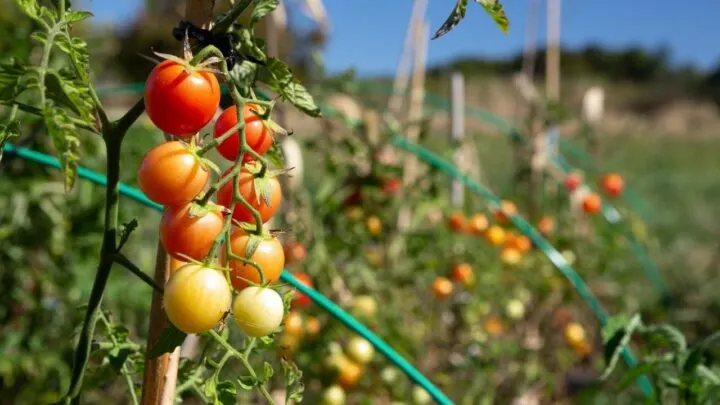It’s a no-brainer that eating vegetables is good for our health (yes, even if they’re not your favorite part of the meal).
One reason for this is the fact that they are infused with vital elements including minerals, fiber, and vitamins.
If you need a little more convincing, consider this research which reveals that a diet rich in veggies and fruits helps to lower blood pressure and mitigate the risk of cancer and heart disease.
Now, vegetables are best enjoyed when they’re fresh, and this is something you can achieve easily by growing your own.
For a list of the best fertilizers for vegetables and a list of the best potting mix for vegetables, you can follow our in-depth guides.
The good thing is, you don’t even need a green thumb to take up gardening.
Below, we’ve listed 11 low-maintenance vegetables that are extremely easy to grow.
Table of Contents
Which are the best low-maintenance vegetables?
- Radish
- Cherry tomato
- Garlic
- Hot peppers
- Rhubarb
- Mustard greens
- Beets
- Potatoes
- Cucumbers
- Kale
- Bush beans
1. Radish
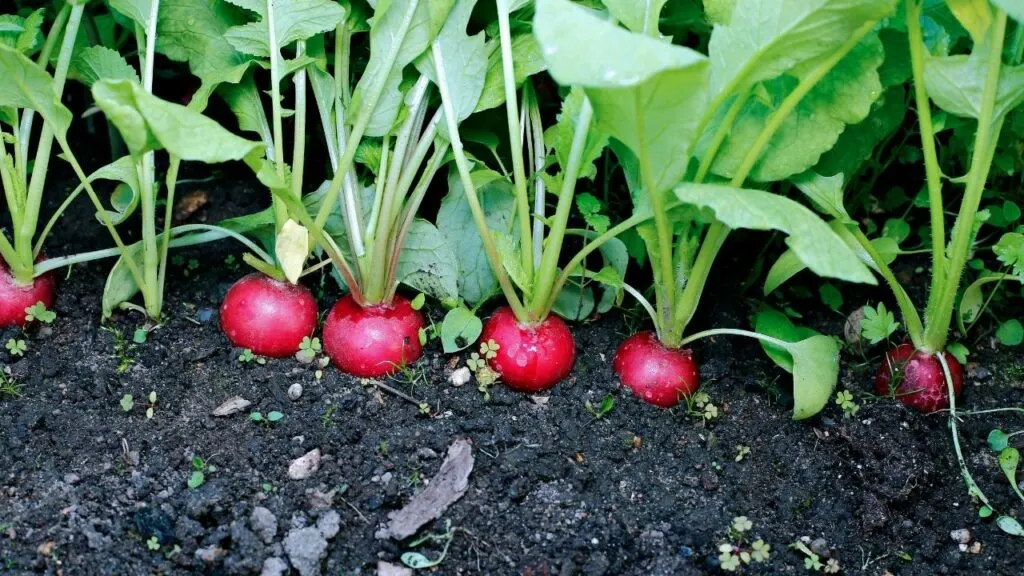
You will likely recognize this vegetable from its vibrant red tubers, which are usually topped with leafy greens.
Scientifically, a radish is known as Raphanus sativus, and it’s a root vegetable that fares best in cool weather. It’s classified in the Brassicaceae family, and has a 2-year-long life cycle.
Radishes fall under two main categories, and this primarily depends on the season that they’re grown in. There are spring and winter radishes. But regardless of the season, one thing we can all agree on is that they’re super easy to maintain.
Two aspects that make them low-maintenance is their tolerance to cold and quick maturity.
You can harvest these bad boys in as little as one month after sowing. A shorter growing season means less time having to water and care for this plant in other ways.
When it comes to hardiness, the radish is on a short list of vegetables that can tolerate frost. I’m referring to temperatures ranging between (26 to 31°F). Even if its foliage gets damaged by a frost, the plant can grow back from its root system.
Other than the cooler temperatures, there are a few things you should be mindful about when caring for radishes.
To start with, you should plant your radish in rich, and well-draining soil. It’s also important that the soil be loose as the roots cannot grow in a compacted medium.
Next, provide it with full sun to partial shade. In terms of watering, provide it with at least an inch of water each week. You might have to water more frequently if the soil drains too fast.
2. Cherry Tomato
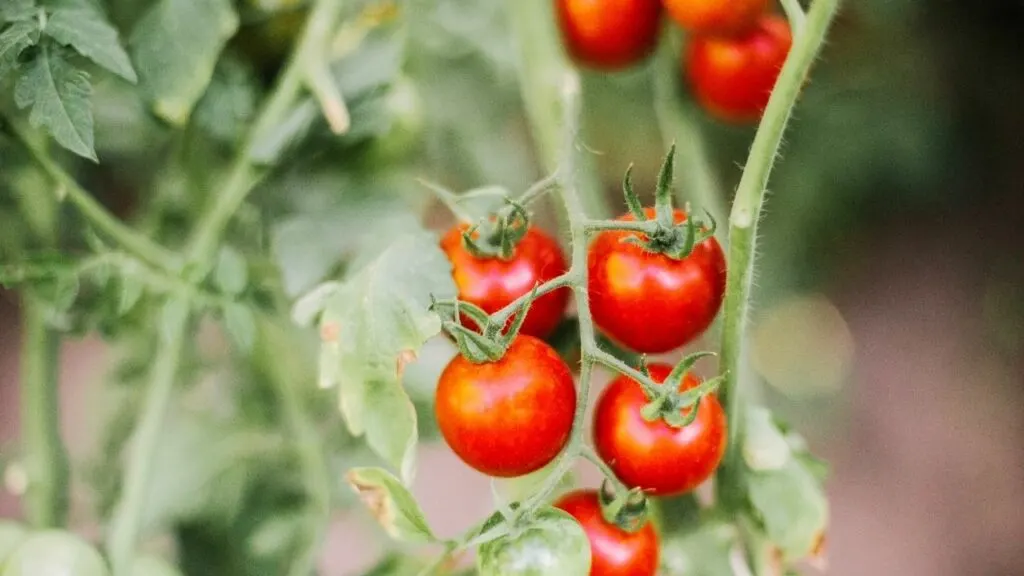
Tomatoes are notorious for being hard to maintain. As soon as the weather warms up, they become susceptible to an array of fungal diseases. But, there are a few species that have proven to be an exception, and hybrid cherry tomatoes are one of them.
Compared to open-pollinated tomato species, cherries are more resistant to diseases. Better yet, the majority of these hybrids are bred to grow more aggressively and to yield more fruits.
Another aspect that makes them easy to grow is their flexibility. Cherry tomatoes aren’t picky about where or how they’re grown. You can grow them in a garden or in pots, supported by another plant, or hang them in a basket. Essentially, you can’t go wrong with this vegetable.
The only thing you’ll need to provide is a long sunbath. The cherry tomato plant requires 6 to 8 hours of sun every day, so you might want to grow it in the sunniest spot in your garden (or house). For temperature, maintain it at 78 to 92°F (26-34°C).
It’s also a good idea to stake your cherry tomato plant. Doing so ensures that its vines remain strong enough to support the weight of the growing fruits.
For the best-tasting fruit, grow this plant in well-draining soil with a pH of 6.2 to 6.5. If you can get these factors right, you’re guaranteed of a plentiful harvest.
Other requirements entail watering every 2 to 3 days, and fertilizing at least once a week, especially during the growing season. Propagating the cherry tomato is quite easy. You can start by sowing its seeds indoors, then transplant it outdoors when it reaches about 12 weeks.
3. Garlic
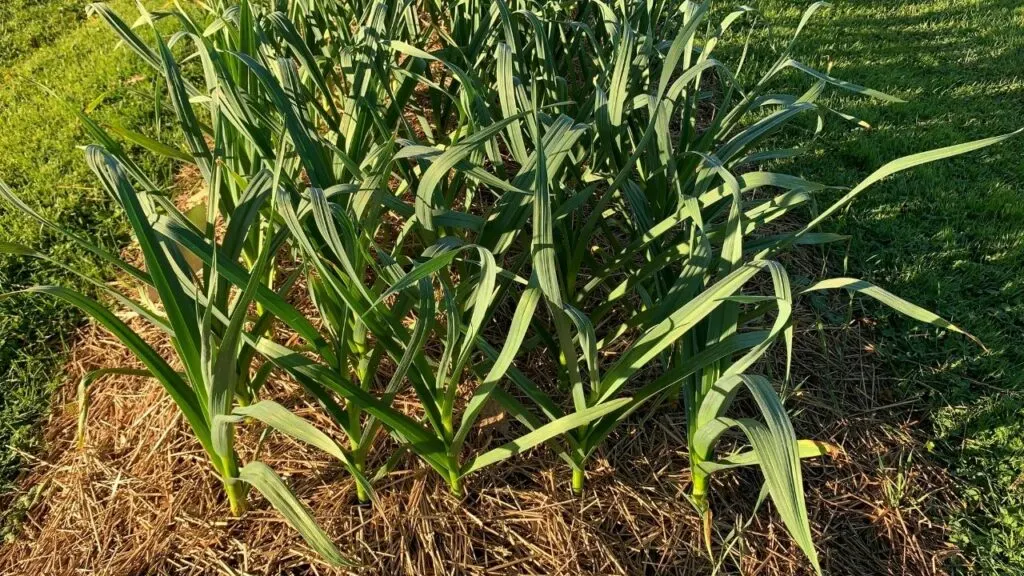
A member of the Allium family, garlic is a close cousin to onions, shallots, and leeks. On the surface, it comes across as flattened grass-like leaves. But underground, the crop forms a bulb, which can hold between 4 and 20 cloves.
Revered as nature’s most versatile medicinal plant, this veggie is quite easy to grow and can provide you with one year’s worth of supply.
All you need to do is dig a hole, plant your garlic clove, cover, and forget about it until in summer when you have to harvest.
Ok, well, you will have to monitor its progress and water when necessary. But that’s all you’ll need to do. It’s a very resilient plant, so it’s not too vulnerable to diseases.
It rarely gets attacked by pests and doesn’t require any pruning or staking.
To enjoy its health benefits, simply look for a sunny spot, with properly draining, rich soil. A partially-shaded area will work too, but the harvest might not be as abundant as if you were growing in a very sunny spot.
For the best results, it’s also a nice idea to plant your garlic in well-amended soil. The soil should be fertile, well-draining, and enriched with a layer of compost.
If you don’t have compost, you can use well-rotted manure instead.
Garlic is a cool-season crop, so you’ll need to keep the temperatures low. It thrives when provided with temperatures of between 32° and 50°F (0-10°C). The ideal humidity is 45 to 50%.
Propagating this vegetable is rather easy. Start by separating the cloves, keeping the papery coverings intact.
Now, all that’s left is to plant each clove in a suitable potting mixture or garden soil and wait for it to grow. A quick tip: place the cloves so that the pointed top is upright.
4. Hot Peppers
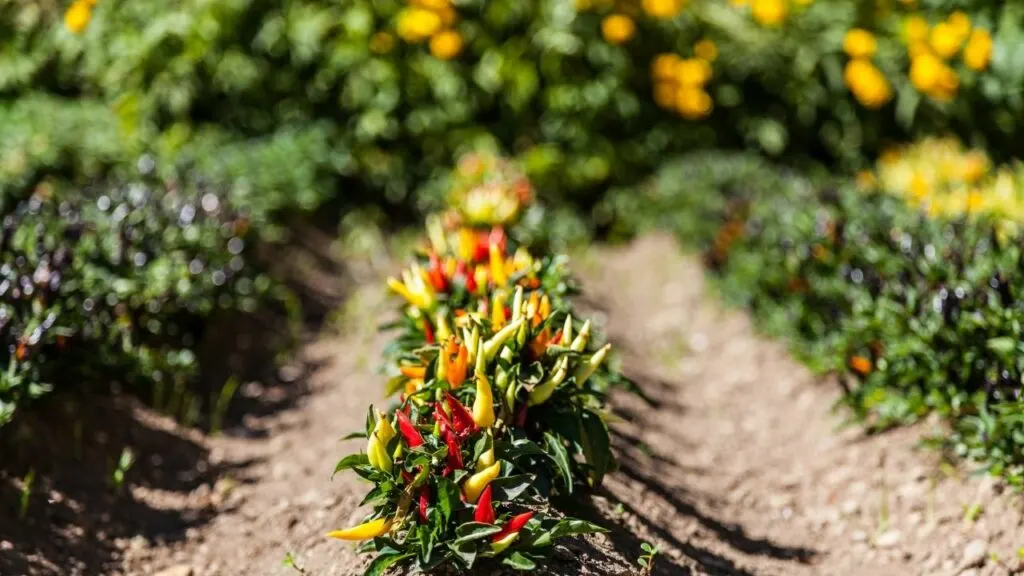
If you love adding pepper to your dishes, then this is the perfect low-maintenance vegetable for you.
A member of Solanaceae, the nightshade family, hot peppers are fun to grow and they reward your minimal efforts with vibrantly colored chillies, in shades of yellow, red, orange, and purple.
One reason why these small hot peppers are easy to grow is the fact that they’re not sensitive to the harvesting time. You’re free to harvest at any time regardless of the color they’ve attained thus far.
Forgot to harvest your peppers last month? No worries! You can still harvest them.
The only difference is that they’ll be hotter. It also doesn’t hurt that this vegetable is rarely attacked by pests or diseases.
That said, you will need to plant this vegetable at the right time.
Hot peppers do better in warm temperatures. It means that you should start growing them early enough so they have time to flower and fruit before the temperatures start to drop.
It’s also a good idea to expose your hot pepper plant to adequate light.
Experts recommend providing between 14 and 16 hours of light, daily. If access to natural light is an issue, grow lights can work too.
Just be sure to place the fixtures 7 to 12 inches above its leaf canopy to avoid burning the leaves.
Keep the soil consistently moist too but do not over-water it. If planting using seedlings, remember to space them 2 to 3 feet apart. This way, they’ll have plenty of space to grow. You can also boost this vegetable’s growth with an organic fertilizer.
5. Rhubarb

Are you the type of gardener who barely remembers to water your houseplants? If so, you will appreciate the drought tolerance of rhubarb.
A perennial vegetable, this crop bears a striking resemblance to celery. For one, it has edible stalks just like celery. It’s also about the same size as celery. The only difference comes in the coloration, where rhubarb’s stalks range from red to a blush color.
There are two factors that make this vegetable low maintenance. For one, it’s highly resistant to drought, and two, it has a short season.
This plant is able to store water in its fibrous root system; hence, the minimal watering needs.
Furthermore, its growing season spans between April and June, which leaves little room for problems like pest infestations and diseases.
It’s also not too fussy about the type of soil it’s planted in, but it thrives in compost-enriched soil. When planting, consider the amount of space you have.
Keep in mind that it grows very wide, up to 3 feet in diameter. Moreover, the spot should have exposure to full sun or just partially shaded.
It’s also a good idea to remove the flower stalks as soon as they appear. Otherwise, they’ll take up the energy that the plant needs to grow healthy, edible stalks.
If you’d like to keep this vegetable around, you can propagate it with ease from its cuttings.
If you plan to propagate, dig up the crown in early spring or fall, then divide the crown into sections using a garden knife.
6. Mustard Greens
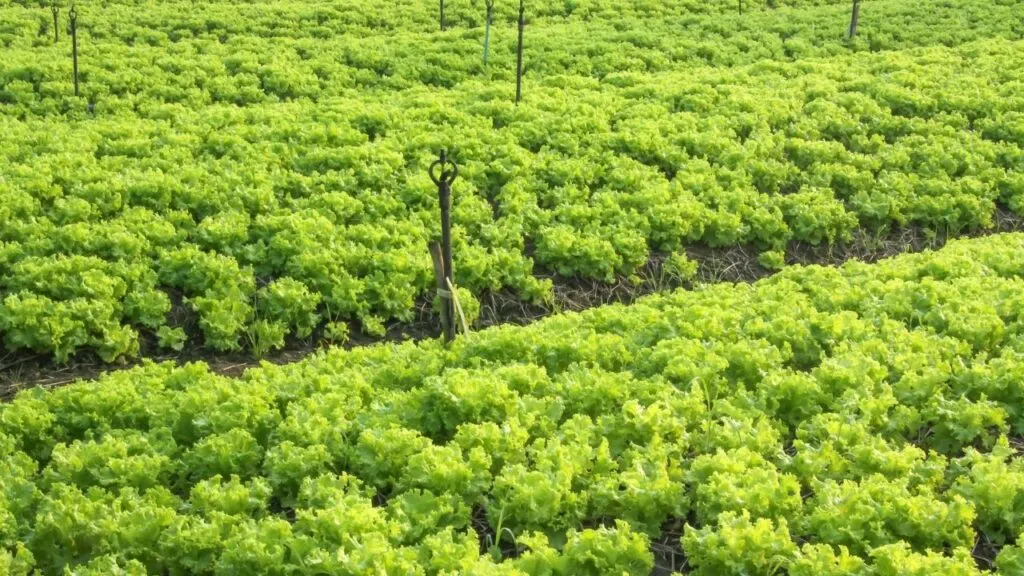
If you love incorporating vegetables into your salads, then mustard makes a superb addition to your kitchen garden. This hardy leaf veggie produces a rosette of light to dark green leaves, which are supported on coarse stems.
Most vegetables require a balanced fertilizer for growth. But the Mustard green can do without if it’s grown in well-amended soil, and this makes for very low maintenance.
You will also be impressed with its quick maturity. You can start picking leaves in as little as 4 weeks, by which time the leaves will be 6 to 8 inches long.
After all, this is the best time to harvest. If you wait too long, the leaves will be tough and bitter.
In addition to timing the harvest correctly, another thing mustard greens require is exposure to plenty of sun. Partial shade can work too but it might slow down the plant’s growth.
Another point you should take into account is the season during which you plant this vegetable. If planting for the purpose of its seeds, the best time is spring as the warmer temperatures encourage seed production.
But if you’re more interested in its leaves, then sowing in summer is much better.
If you’d like to have this vegetable in the next season, propagating it is simple. In fact, you can save the seeds and use them to replant them.
Here’s a quick guide on how to save mustard green seeds. Now, once you get to sowing, ensure you plant the seeds about a half-inch (1.3cm) deep and an inch apart. Also, remember to keep the soil constantly moist, until the seeds germinate.
7. Beets
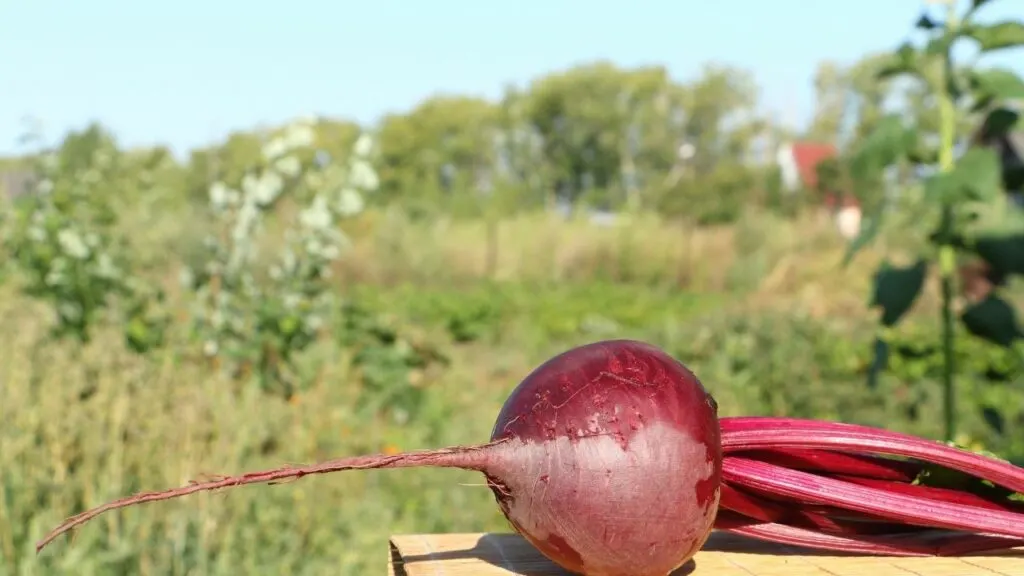
Chock full of vitamins A and C, and rich in fiber, beets contain a higher amount of iron than any other vegetable. And yes, that includes spinach!
Even better is the fact that its red hue comes from the compound betalain- a blend of purple and yellow pigments which mitigate the risk of cancer.
To top it all off, the plant on which this vegetable grows produces colorful green foliage with red-colored veins and stems. So it’s sure to add color to any dull-looking garden.
If you’ve been thinking of growing this plant, you’re in luck because it’s one of the easiest to maintain.
It does best in cool temperatures, which makes it suitable for growing even in late summer. In fact, it can survive a light frost of temperatures ranging between 28 and 32°F.
There’s also the fact that it’s rarely ever bothered by pests or diseases. And, it doesn’t require any pruning or staking.
When it comes to the growing medium, beets thrive in loamy, slightly acidic soils (pH range from 6.0 to 7.5). You can also incorporate a tiny amount of wood ash, which enriches it with potassium.
Like mustard greens, beets like to keep to themselves.
So when planting, sow the seeds about 4 inches apart and at least an inch deep. To keep the soil moist for longer, you can then cover the seeds with a layer of shredded leaves or grass clippings.
Beets don’t require an excessive amount of watering. If you poke the soil and feel that it’s moist, you don’t need to add any more water.
But if it feels completely dry, you can give it a shallow soak. In terms of light, it’s best to grow your beets in full sun. However, it will still produce a ton of leafy greens even when grown in a partially shaded area.
8. Potatoes
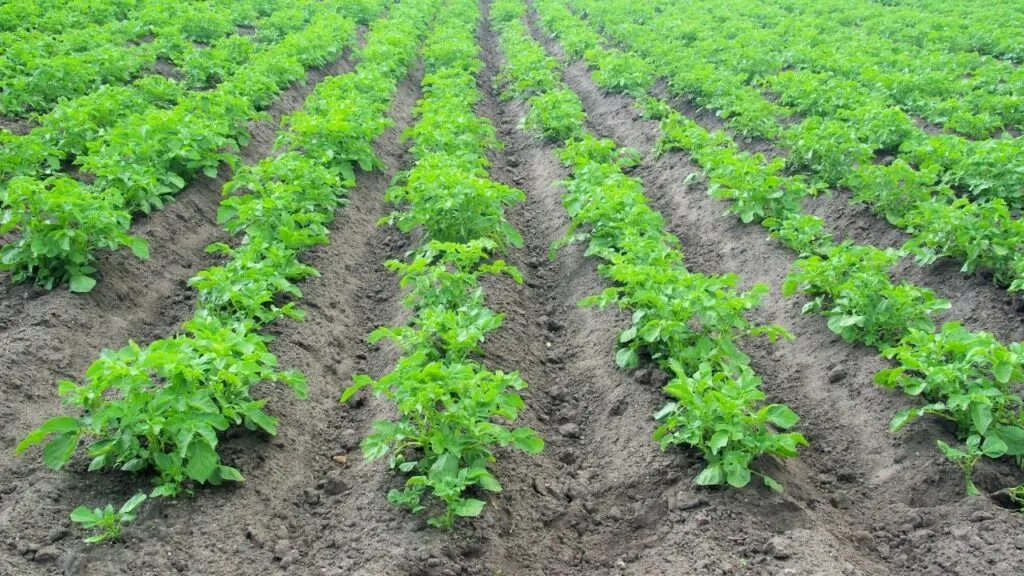
Were you aware of the fact that potatoes pack more energy than any other common vegetable? They even contain a higher amount of potassium than bananas. Plus, a single medium-sized potato can meet up to 30% of your daily intake of vitamin C.
With such incredible benefits, it makes sense why so many people want to add it to their plant collection. If you’ve been considering this decision, you can rest easy knowing that it’s not difficult to maintain.
One thing that makes for easy maintenance is their high level of adaptability. As a result, they produce a decent yield even when the conditions are less than ideal. They can even tolerate a light frost, but it’s good to offer some kind of protection for maximum yield.
In addition to offering extra protection in winter, you’ll want to grow your potatoes in full sun. Though they can survive in a partially-shaded spot, the lush top growth is responsible for feeding the tubers underneath.
So the greater the exposure to the sun, the better.
It’s also advisable to plant your potatoes in soil, which is slightly acidic; a pH of 5.0 to 6.0 is the best. If the soil you’re working with contains a decent amount of organic matter, and the pH ranges from neutral to acidic, your potatoes should do just fine.
These vegetables also prefer warm temperatures. Its tubers grow best when the soil temperature is retained in the range of 60 to 70°F (16-21°C).
If you wish to propagate, start by looking for seed potatoes (whole potatoes, usually bred for this specific purpose). Plant each potato piece about 2 to 3 inches deep, leaving an interval of about 24 inches.
9. Cucumbers
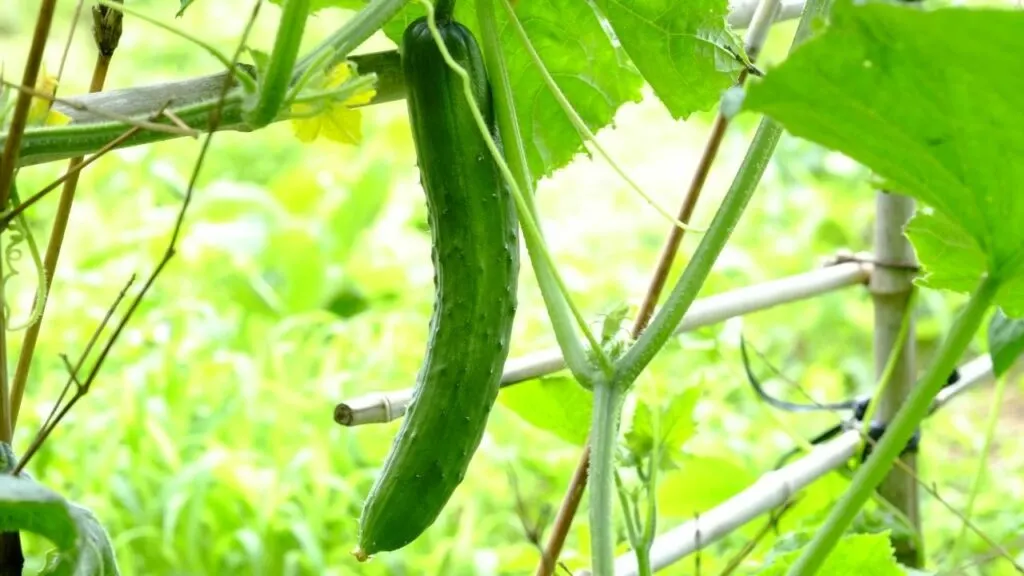
Have you been looking for a vegetable that you can grow with minimal effort but still get a bountiful harvest? If you have, cucumbers are your best bet. The sun-loving veggie has a very distinct look. It’s elongated, growing up to 6 inches long, and has a green hue, which turns yellow upon maturing.
Cucumbers don’t require much in the way of maintenance, yet they reward your efforts immensely. Expect to get up to 10 large cukes or 15 small ones from just one healthy cucumber plant.
One aspect that makes for easy maintenance is their adaptability to different soil types. To be specific, it’s one of the few vegetables that can thrive even when it’s grown in clay soil. When it’s grown in clay, it produces a heavier yield and when it’s grown in sandy soil, it produces an early yield.
Other things you’ll need to do to maintain your cucumber plant entails picking the right planting site, watering properly as well as ensuring that the temperature and humidity are kept in the correct levels.
In regards to location, you will want to find one that is exposed to full sun. Cucumbers fare best in warm temperatures and plenty of light. It should have soil, which is fertile with a pH of neutral to slightly-acidic.
It’s also advisable to water cucumbers regularly. They require at least one inch of water every week. You can increase this frequency if the temperatures are sky-high.
Another crucial point to note related to watering is timing. We recommend doing so in the morning or early afternoon.
And while you’re at it, ensure the water doesn’t come into contact with its foliage. This can lead to leaf diseases, which would spell danger for the plant’s health.
10. Kale
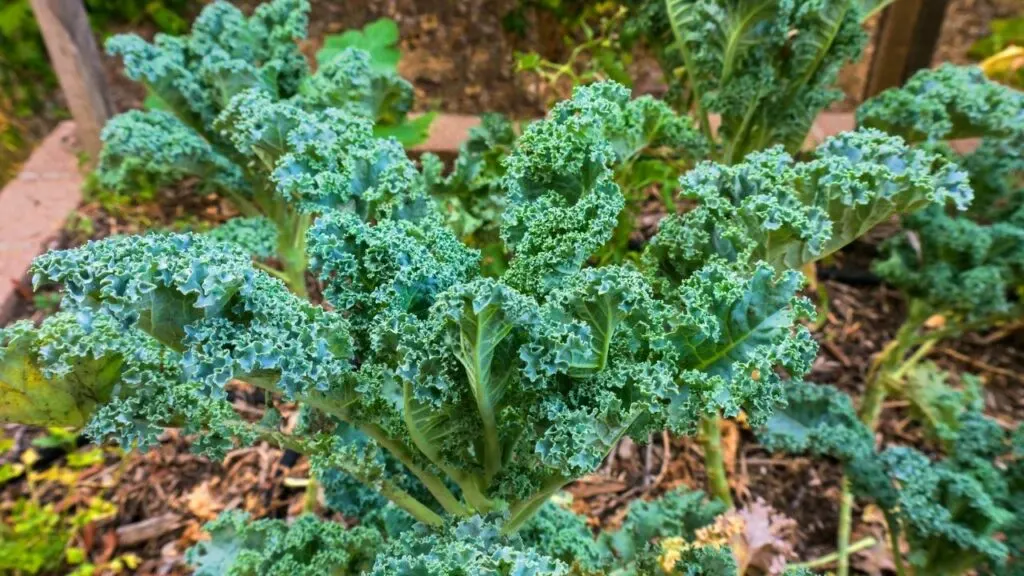
A close relative to cabbage, kale is categorized under the Brassica oleracea group of plants. It’s actually a type of cabbage, with the only difference being that it lacks the tightly-formed head that most cabbages have.
If you’ve been looking for a low-maintenance vegetable that’s packed with a bevy of nutrients, this is it. Kale is rich in calcium and vitamins A, C, and K. It also provides a good dose of folate, vitamin B6, and iron, all of which are essential elements of the brain molecules.
Now to these perks, factor in its virtue of hardiness, which is what makes this crop low-maintenance.
Kale is one of those vegetables that can grow virtually anywhere. Contrary to its fair-weather friends, this one can grow right through a light winter’s frost. I’m talking about surviving temperatures as low as 20°F. Another factor that makes it low maintenance is the fact that it has no issues with pests like other types of cabbage do.
If you’re considering planting this crop in your garden, ensure you do so in rich soil, enhanced with organic matter. Kale also prefers to be placed in a partially shaded spot.
Avoid exposing it to an excess amount of heat as this can alter its flavor and cause wilting.
It’s also good practice to water your kale regularly. This way, the soil can stay moist, and this helps the kale leaves turn out sweet and crisp. The temperature should be maintained between 60 and 65°F (16-19°C) and the surrounding environment kept humid.
If you’re planning to grow this vegetable in the coming season, you have two options. One, you can sow the seeds directly in your garden. Or, you can start off indoors then transplant it into your garden later on.
Whichever route you choose, ensure you meet its growing needs and you won’t get disappointed.
11. Bush beans
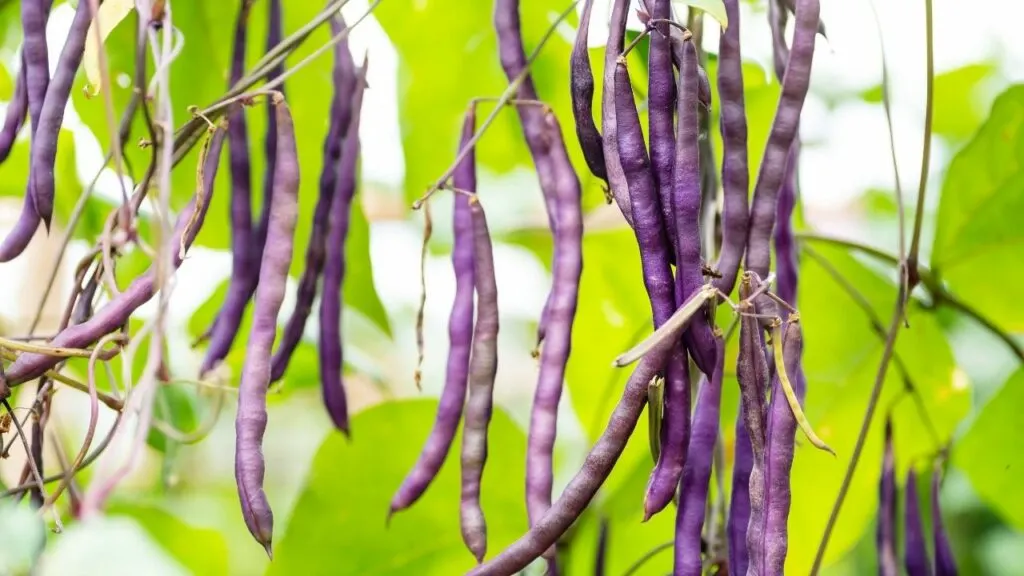
One of the best sources of plant-based proteins, bush beans are another veggie that will make a great addition to your garden.
The plant gets its name from its structure- an upright and bushy growth that does not require any artificial support. The same can’t be said of its close cousin- the pole bean, which requires its vines to be supported. This is one of the reasons why this crop is so easy to maintain.
Another thing this vegetable has going for itself is a short time to maturity. Bush beans take 50 days to produce. In comparison, pole beans can take as long as 65 days. The shorter growing season translates to a shorter period where you have to water, fertilize and care for your plant in other ways.
Since bush beans can also grow in a variety of soils, you don’t have to be too choosy when determining the medium to grow them in. What’s more important is that you sow the seeds about 2 inches deep into the soil and space using an interval of 18 to 30 inches.
For the best yield, maintain temperatures in the 65-85°F range. Don’t let temperatures drop below 60°F because then the seeds will start rotting before they’ve had a chance to sprout.
Bush beans also thrive in full sun. So whenever possible, ensure your plant is getting up to 8 hours of sun or a minimum of 6 hours.
Furthermore, sow seeds in well-draining soil, with preferred pH of 6.0 to 7.0. Finally, water your crop as frequently as it takes to keep the soil moist, but not waterlogged.
Wrap Up
Taking care of a new vegetable garden can feel intimidating, especially if you’ve never tried gardening before.
But, it doesn’t have to be. Not if you choose low-maintenance veggies, which can withstand a bit of neglect.
Whether it’s maintaining the correct temperature, remembering to water, or planting in the right soil, the low maintenance vegetables we’ve highlighted are more forgiving than others.

Daniel has been a plant enthusiast for over 20 years. He owns hundreds of houseplants and prepares for the chili growing seasons yearly with great anticipation. His favorite plants are plant species in the Araceae family, such as Monstera, Philodendron, and Anthurium. He also loves gardening and is growing hot peppers, tomatoes, and many more vegetables.

